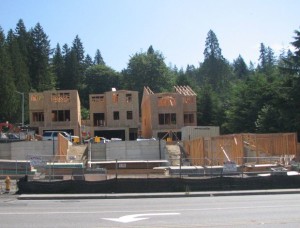A report is out from The Century Foundation that exposes interesting national demographic trends that appear, on their face, to have little to do with Vermont. We’re not so sure, though.
“The Architecture of Segregation,” by Paul Jargowsky, argues that the number of high-poverty neighborhoods nationally has increased significantly since 2000 and that poverty has become more concentrated – in part because of policy choices that could be changed to produce a different result. As is typical with national-scale reports like this, the focus is on major metropolitan areas, such as Detroit or St. Louis, so the Vermont reader is left wondering what any of this has to do with us – even if we do want to understand sociological trends around the country that help explain events in places like Ferguson or Baltimore. (Note of regional interest: the metro area with both the highest black concentration of poverty and the highest Hispanic concentration of poverty is a little more than a stone’s throw away: Syracuse, N.Y.)
Well, Vermont may not have poverty concentrations in the scale of the metro areas, but it’s still worth considering whether similar trends feeding disparate residential patterns have been at work here. For example, many suburbs have grown at the expense of cities they surround. Jargowosky’s word for that grown is “cannibalistic.”
“In virtually all metropolitan areas, suburban rings grew much faster than was needed to accommodate metropolitan population growth,” he writes. That has a ring of familiarity around here. Burlington’s population has been fairly stagnant; the big housing growth is indeed in the suburbs. But to what extent does the new housing reflect the income distribution in the population? What share of the new rental complexes rising from the fields in Williston, for example, are “affordable”?
Jargowskyomes to two conclusions that could have some application here, or at least are worth thinking about:
“Our highly dispersed and profoundly unequal distribution of housing is not inevitable; indeed, it is not the norm around the world. The two main changes that need to occur are simple to state, but hard to bring about. First, the federal and state governments must begin to control suburban development so that it is not cannibalistic: new housing construction must be roughly in line with metropolitan population growth.”
Exactly how state government here (in the absence of county government) would attempt to assert such “control” is an open question.
“Second, every city and town in a metropolitan area should be required to ensure that the new housing built reflects the income distribution of the metropolitan area as a whole. To some, this suggestion may seem like a massive intervention in the housing market. In fact, exclusionary zoning is already a massive intervention in the housing market that impedes a more equitable distribution of affordable housing.”
This brings us back to beating the drum for inclusionary zoning, which is sadly missing throughout the state, including the booming suburbs of Chittenden County.
